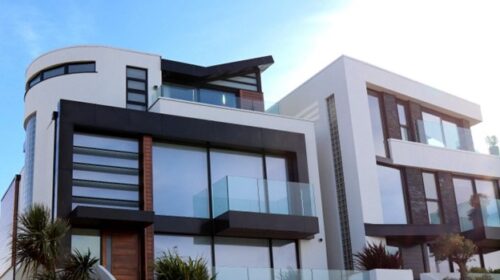Hawaii’s economy continues growing at a slower pace
The Department of Business, Economic Development and Tourism (DBEDT) released its fourth quarter 2018 Statistical and Economic Report today.
In this report, DBEDT revised its projection on Hawaii’s economic growth downward to 1 percent for 2018 from 1.5 percent projected in the previous quarter. The downward revision mainly resulted from the recent economic data released by the U.S. Bureau of Economic Analysis (BEA), which showed that Hawaii’s economic growth during the first half of 2018 was at 0.5 percent. BEA revises state level economic growth data every quarter, which shows that the general trend for Hawaii’s economic growth has been positive but slowing.
According to the BEA data, Hawaii’s economy started the most recent recession in the fourth quarter of 2008 and was out of the recession during the first quarter of 2010, about one quarter later than the national economy. During the current economic expansion, Hawaii’s economic growth rate reached 3.4 percent in 2015 and then went down to 2 percent in 2016, and 1.2 percent in 2017.
“Hawaii’s economy is still expanding and we see our construction industry performing well, with the value of private building permits having increased by 3.6 percent and government contracts awarded increased 39.3 percent during the first three quarters of 2018,” said DBEDT Director Luis P. Salaveria.
About 85 percent of the government projects were under the state government. As an indicator of government construction completed, state government payments for capital improvement projects (CIP) increased 35.9 percent to $1.3 billion during the first nine months of 2018.
During the first 10 months of 2018, Hawaii continued to have the best labor market in the nation with an average unemployment rate of 2.2 percent, which was the lowest in the nation and the lowest rate in Hawaii’s history for the first 10-month period. For statewide employment, the number of people who are either employed for pay or self-employed, was at a record high level during the first 10 months of 2018 at 670,850.
Non-agriculture payroll jobs increased by 10,900 during the first 10 months of 2018. The leisure and hospitality sector accounted for 46.8 percent of the jobs gains with 5,100 jobs added. Healthcare and social assistance and professional and business services each added 2,400 jobs during the same period. A few industries experienced job losses, which included state government (-600 jobs), retail trade (-400 jobs), manufacturing (-300 jobs) and information (-200 jobs).
Visitor arrivals registered the best year-to-date arrivals during the first three quarters of 2018 with more than 7.4 million visitors coming to Hawaii by airplanes. The corresponding nominal visitor expenditures increased 9.8 percent during the first nine months of 2018. Total number of air seats on scheduled flights to Hawaii, a leading indicator of the tourism industry, increased 9 percent during the first 9 months of 2018 and is expected to increase by 5.4 percent during the rest of 2018.
“According to the airline schedule available so far, scheduled air seats to Hawaii during the first nine months of 2019 will increase by 0.3 percent, which leads us to expect about 1.8 percent arrival growth in 2019,” said Chief State Economist Dr. Eugene Tian. “The growth of visitors will be mainly coming from the U.S. market because air seats on international flights are expected to decrease during the first three quarters of 2019.”
The most recent economic forecasts by more than 50 top economic research organizations (the Blue Chip Economic Indicators) released a report (Nov. 10) that the U.S. and world economies will experience steady growth in 2018 and 2019, and the U.S. economy will experience accelerated growth at 2.9 percent in 2018 and 2.6 percent in 2019. Hawaii’s economic growth rate will be lower than that of the nation, as well as lower than the average Hawaii economic growth rate of past 30 years at 1.8 percent.
DBEDT revised the visitor industry forecast with visitor arrivals now growing at 5.8 percent for 2018, 1.8 percent for 2019 and 1.5 percent for 2020 and 2021. Growth of visitor expenditures will be at 8.9 percent for 2018, 4.2 percent for 2019, and 3.6 percent for 2020 and 2021.
DBEDT kept its projection on the non-farm payroll job count unchanged from the previous quarter forecast at 1.2 percent for 2018, 0.9 percent for 2019 and 2020, 0.8 percent for 2021. The unemployment rate projections were revised upward to 2.3 percent for 2018, and will gradually increase to 3.4 percent by 2021.
DBEDT kept the projection for consumer inflation, as measured by the Honolulu Consumer Price Index, the same as previously projected, at 2 percent for 2018, and will gradually increase to 2.7 percent by 2021.
DBEDT revised the nominal personal income growth rates downward from the previous quarter forecast to 3.3 percent for 2018, 3.5 percent for 2019, 3.8 percent for 2020, and 4 percent for 2021. During the first half of 2018, nominal personal income grew 3 percent from the same period last year. Growth of real personal income was also revised downward from the previous quarter forecast and is now 1.6 percent for 2018, and is expected to remain at about that growth rate for the next few years.
The DBEDT Quarterly Statistical and Economic Report contains 136 tables of the most recent quarterly data on Hawaii’s economy as well as narrative explanations of the trends in these data.




